Q
Is 2025 Camry Roomy?
The 2025 Toyota Camry offers a remarkably spacious interior, making it an ideal fit for Malaysian family users. After optimizing its body dimensions and wheelbase, it provides more generous legroom and headroom. Even during long - distance rides, rear - seat passengers won't feel cramped. Meanwhile, the trunk capacity is sufficient to meet the storage needs of daily commutes or long - distance trips.
This car emphasizes practicality in its interior design. For example, the flexible adjustment of the seats and the reasonable layout of the storage compartments further enhance the space utilization. To expand a bit, as a mid - size sedan, the Camry has always been well - known for its comfort and practicality. While maintaining these advantages, the 2025 model might also incorporate more intelligent features, such as a more advanced infotainment system or driving assistance functions, which can bring a more convenient driving experience to Malaysian users.
If you have higher space requirements, you can also consider other models in the same class. However, the Camry's overall performance remains a well - balanced choice, especially suitable for users who value comfort and reliability.
Special Disclaimer: This content is published by users and does not represent the views or position of PCauto.
Related Q&A
Q
Does the 2025 Camry have front sensors?
The 2025 Toyota Camry is indeed equipped with front sensors, which are part of its advanced safety system. These sensors are mainly used for functions such as pre - collision warning and automatic emergency braking, helping drivers better handle the surrounding environment in congested city traffic or when parking. In addition to the front sensors, the 2025 Camry may also come with auxiliary driving technologies like a panoramic camera and blind - spot monitoring to further enhance driving safety. These features are especially useful for Malaysian consumers, as the local traffic conditions are complex, and the sensors can effectively reduce the risk of low - speed collisions. Toyota has been continuously upgrading its safety configurations in recent years. As a flagship model of the brand, the technological updates of the Camry also reflect the growing market demand for intelligent driving assistance. If you're considering buying this car, it's recommended to visit a local dealer to experience the actual operation, as there may be differences among different configuration versions. You can also learn more about the driving assistance functions suitable for Malaysian road conditions.
Q
Is the 2025 Camry fun to drive?
The 2025 Toyota Camry has seen a significant improvement in driving pleasure. In particular, the hybrid version is equipped with a brand-new 2.5-liter four-cylinder hybrid system, which offers more powerful power output and more responsive throttle. Paired with the retuned suspension system, the vehicle performs more stably in corners, and the steering feedback is more direct, making it suitable for the winding roads in Malaysia.
In addition, the new car is also equipped with a driving mode selection function, including a sport mode, which can further optimize the power and steering performance to meet the needs of users who pursue driving excitement. For Malaysian consumers, the Camry has always been known for its comfort and reliability. While retaining these advantages, the 2025 model has truly increased driving pleasure by upgrading the power and handling performance, especially suitable for long - distance driving or urban commuting.
If you have higher requirements for the driving experience, you can also consider installing the performance package, including an upgraded braking system and a more sporty suspension tuning, all of which can further enhance the vehicle's dynamic performance.
Q
Does Camry 2025 have sunroof?
Based on the current information, the 2025 Toyota Camry is expected to continue offering a panoramic sunroof or a regular sunroof in some high - end models. The specific configurations may vary depending on the market versions. In the Malaysian market, the Camry is usually imported. Sunroof configurations are more commonly seen in higher - end models such as the 2.5V or hybrid versions. It is recommended that consumers check the specification sheets provided by local dealers after the official release.
The sunroof design not only enhances the interior lighting but also provides greater ventilation convenience. However, it should be noted that in tropical climates, it may increase the air - conditioning load. It is also important to regularly maintain the drainage holes to prevent blockages. Malaysian buyers can weigh their own needs when making a purchase. If you prefer the open - air feeling of a sunroof and have a sufficient budget, high - end models are an ideal choice. On the contrary, the entry - level models offer better cost - effectiveness.
Other models in the same class, such as the Honda Accord or Mazda 6, also offer similar configurations. Consumers can make a decision by comparing the space performance and functional preferences among these models.
Q
Does the 2025 Camry have rain sensing wipers?
The 2025 Toyota Camry comes with rain-sensing wipers on some of its high - end models. This feature automatically detects the intensity of rainfall through an optical sensor on the front windshield and adjusts the wiper speed. There's no need for manual adjustment, which can significantly enhance the convenience and safety of driving in rainy conditions, especially suitable for Malaysia's rainy climate. If you're considering purchasing this model, it's advisable to confirm the specific configuration with local dealers, as there may be differences in vehicle versions across different regions.
Rain-sensing wipers have become a common feature in mid - to high - end vehicles in recent years. Apart from Toyota, other brands such as Honda and Mazda also widely use similar technology. The principle is to monitor the density of water droplets on the windshield through infrared or optical sensors, and then the ECU controls the interval and speed of the wipers. It's more intelligent compared to traditional intermittent wipers.
For Malaysian consumers, this kind of configuration is very useful during the rainy season or in sudden tropical downpours. However, it's necessary to keep the sensor area clean to avoid misjudgment. If you're skeptical about the automatic function, most models also support manual override, combining technology with flexibility.
Q
Does the 2025 Camry have daytime running lights?
The 2025 Toyota Camry is indeed equipped with Daytime Running Lights (DRL), which are standard across all models. This meets the current global automotive safety trend and can improve visibility during daytime driving, reducing the risk of accidents. DRLs are especially useful in tropical-climate countries like Malaysia, as traditional lights may not be prominent enough in strong sunlight.
In addition to their basic functions, the DRLs of the 2025 Camry use LED light sources, which consume less energy and have a longer lifespan. The design of the light clusters is also integrated into the dynamic front-end styling of the new model. It's worth mentioning that many new-car buyers in Malaysia pay attention to the vehicle's lighting configuration. Although local regulations do not mandate DRLs, most new cars imported after 2020 are already equipped with them.
As Toyota's main model in the D - class sedan market in Malaysia, the upgrade of such safety features helps maintain its competitiveness. Moreover, features like DRLs also affect the vehicle's residual value in the used-car market. If you're considering buying this car, it's recommended to visit an authorized dealer to see the lighting effects in person, as the DRL designs may vary slightly among different models.
Q
How to use cruise control 2025 camry?
The cruise control function of the 2025 Toyota Camry is very easy to use. First, make sure the vehicle is driving on a flat road with light traffic and the speed reaches over 40 km/h. Then, press the "CRUISE" button on the right side of the steering wheel to activate the system. At this time, the cruise indicator light will appear on the dashboard. Next, set the desired speed using the "SET-" or "RES+" buttons. After setting, the vehicle will automatically maintain that speed and you don't need to keep pressing the accelerator. If you need to temporarily cancel the cruise, just gently step on the brake or press the "CANCEL" button. To completely turn off the system, press the "CRUISE" button again.
It's worth mentioning that the 2025 Camry may be equipped with a more advanced Dynamic Radar Cruise Control (DRCC) system. This system can automatically adjust the vehicle speed to maintain a safe distance from the vehicle in front, further enhancing the comfort and safety of long - distance driving. For users in Malaysia, this system is especially useful on long - distance routes like the North - South Expressway. However, it should be noted that this system is only an auxiliary function, and the driver still needs to stay focused and be ready to take over the vehicle control at any time.
Q
What is vehicle exit assist on 2025 Camry?
The Vehicle Exit Assist feature of the 2025 Toyota Camry is a safety - enhancing technological configuration. It's mainly used to prevent the risk of rear - end collisions when passengers open the doors. This system monitors oncoming vehicles or pedestrians from the rear through the vehicle's radar or cameras. When a potential danger is detected, it will issue visual or audible alerts. Some high - end versions may even automatically delay the door opening. This feature is particularly useful in busy traffic areas like Malaysia, as it can reduce accidents caused by suddenly opening the doors.
Modern automotive safety technology is moving towards the direction of intelligence. Similar functions such as blind - spot monitoring and rear cross - traffic alert are gradually becoming popular. It is recommended that car owners regularly read the vehicle manual to familiarize themselves with the operation logic. Meanwhile, although these assistive systems can reduce risks, drivers still need to maintain the habit of active observation. The rainy climate in Malaysia may affect the sensitivity of the sensors, so it's also important to keep the camera and radar areas clean.
Q
Does the 2025 Camry have 360 cameras?
Based on the current information, the 2025 Toyota Camry may be equipped with a 360-degree panoramic camera system on some high-end models. This technology can synthesize a panoramic image of the vehicle's surroundings through multiple cameras, helping drivers park more easily or navigate through narrow roads. It's especially useful in the congested urban areas or narrow parking lots in Malaysia. The 360 - degree camera is usually used in conjunction with Advanced Driver Assistance Systems (ADAS), such as automatic parking and blind - spot monitoring, to further enhance safety. If this configuration is introduced in the Malaysian market, it may be available as an optional feature for the flagship or high-end versions. The specific details still need to wait for the official release from Toyota Malaysia. For consumers who are interested in the Camry, apart from the camera system, they can also pay attention to other upgrades, such as the optimization of the hybrid system or the new-generation infotainment system, which may become the highlights of the 2025 model. It is recommended that interested buyers directly contact local dealers to get the latest configuration information so as to make a more suitable choice.
Q
What is the hold button on the 2025 Camry?
The "Hold button" of the 2025 Toyota Camry is the key used to activate the auto - hold function. Its main function is to automatically maintain the braking state after the vehicle comes to a complete stop, eliminating the need for the driver to keep pressing the brake pedal for a long time. It's especially suitable for common driving scenarios in Malaysia, such as traffic jams or areas with frequent traffic lights. This function can also effectively prevent the vehicle from rolling backward when starting on a slope, enhancing driving convenience and safety.
To expand a bit, the auto - hold function has now become a standard feature on many mid - to high - end vehicles. Different brands may call it Auto Hold or Brake Hold. The working principles are similar, but the operation logics may vary slightly. For example, some models require the driver to press the brake pedal deeply to trigger it, while the Camry is controlled directly via a button. For Malaysia's mountainous roads and congested traffic conditions, this kind of function is very practical. It is recommended that owners first get familiar with the timing of triggering and deactivating the function in a safe area when using it for the first time. At the same time, note that this function usually only takes effect when the seatbelt is fastened and the doors are closed, which is also a safety - oriented design.
Q
Does 2025 Camry need to be plugged in?
Whether the 2025 Toyota Camry needs to be plugged in the Malaysian market depends on its powertrain configuration. According to Toyota's current global product line planning, the Camry may offer multiple options such as a fuel-powered version, a hybrid electric vehicle (HEV) version, and potentially a plug-in hybrid electric vehicle (PHEV) version. Among them, only the PHEV version needs to be externally charged, while the traditional HEV version is automatically charged through the engine and the kinetic energy recovery system and does not require plug-in.
For Malaysian consumers, if they choose the PHEV version, charging facilities and daily commuting distance are factors to be considered. Because PHEV models can travel a certain distance (usually about 50 - 80 kilometers) in pure - electric mode, which is suitable for short-distance travel and can reduce fuel consumption. The HEV version is more suitable for users who often drive long-distance or have limited charging conditions.
In addition, the Malaysian government has offered tax incentives for energy-efficient vehicles (EEV) in recent years, and hybrid models may enjoy certain policy advantages. It is recommended to check the latest policies or consult dealers before purchasing a car to confirm the specific vehicle configuration and local adaptation. Toyota's hybrid technology has been developed for many years, with a mature system stability and fuel economy performance. Both HEV and PHEV can provide users with a more environmentally friendly travel solution.
Latest Q&A
Q
What is the CC of Honda City 2020?
The 2020 Honda City hits the Malaysian market with two engine choices: a 1.5-liter SOHC i-VTEC naturally aspirated petrol engine and a 1.5-liter DOHC i-VTEC hybrid system. Let's break down the specs. The petrol unit displaces 1497cc, cranking out 121 horsepower and 145 Nm of torque. On the hybrid side, it pairs that same 1.5-liter engine with an electric motor, resulting in a combined 109 horsepower – this one's all about fuel sipping efficiency.
Now, CC (cubic centimeters) is the measure of engine displacement, and it directly impacts how a car performs and drinks fuel. Typically, a bigger displacement means more power, but it can also mean higher fuel bills. The City's 1.5-liter sweet spot is a big reason it's so popular in Malaysia – it strikes that perfect balance between pep and fuel economy, handling both city commutes and longer drives like a champ.
But the 2020 City isn't just about the engine bay. It also comes loaded with Honda Sensing safety tech and a modern, fresh interior design, which really ups its game in the market. For Malaysian buyers, this car ticks all the boxes: practical, easy on the wallet at the pump, and packed with the latest tech. It's a solid all-rounder.
Q
How much does a Honda 2020 cost?
Prices for the 2020 Honda models in Malaysia vary quite a bit depending on the specific model and how it's kitted out. Take the Honda City, for example – you're looking at roughly RM70,000 to RM90,000. The Civic sits a bit higher, usually ranging from around RM110,000 up to RM140,000, while the CR-V typically falls between RM140,000 and RM170,000. exact figures hinge on the trim level, engine specs, and any extra add-ons you might go for.
When buying a new car in Malaysia, it's not just the sticker price you need to factor in. There's registration fees, insurance, road tax – all that extra stuff adds up and affects the final on-the-road cost.
Over in the used car market, 2020 Honda models will fluctuate in price too, based on mileage, condition, and remaining warranty. You can generally pick one up for 20% to 40% less than a brand-new equivalent.
If you're in the market, I'd definitely recommend shopping around different dealers to compare quotes. It's also worth checking out any ongoing Honda promotions or financing deals – those can really help you save some cash.
Hondas have a solid rep in Malaysia for being reliable and fuel-efficient, especially popular models like the City and Civic. They're pretty affordable to own long-term, and getting them serviced or repaired is relatively straightforward.
Q
What is the top speed of Honda City 2020?
The 2020 Honda City maxes out at around 190 km/h, which is the top speed you can squeeze out of its 1.5-liter i-VTEC naturally aspirated engine under ideal conditions. Of course, in the real world, you might see a slight difference depending on road conditions, how much you're carrying, or the weather. This car is pretty popular in the Malaysian market, and it's not just because of its solid performance—it's also about that fuel efficiency and nimble handling that makes city driving a breeze. The CVT gearbox in the City does a good job smoothing out power delivery, so acceleration feels seamless and efficient, whether you're commuting daily or hitting the highway for a longer drive. For Malaysian buyers, beyond just top speed, overall performance and maintenance costs matter a lot, and the City delivers here too. Its low trouble rate and wide service network make life easier for owners. If you're craving a bit more zip, there's always the Honda City RS variant. It gets some tweaks to the engine tuning and sportier bits, but don't expect a huge jump in top speed—these cars are all about balancing practicality with a bit of driving fun, after all.
Q
How safe is the Honda City 2020?
The 2020 Honda City holds its own when it comes to safety, packing in 6 airbags, Vehicle Stability Assist (VSA), Anti-lock Braking System (ABS), and Electronic Brake-force Distribution (EBD). That's a pretty solid setup for the class, and it should do a good job of keeping you protected during those daily drives around Malaysia. Honda's ACE Body Structure is also on board here, which is designed to effectively disperse crash energy and boost occupant safety in the event of a collision. It's worth highlighting that the 2020 City scored a 5-star rating in ASEAN NCAP crash tests, which is a solid stamp of approval for its safety credentials. For Malaysian buyers, picking this car means you're not just getting Honda's usual reputation for reliability, but also a decent level of safety kit. If safety is a top priority for you, it's definitely worth checking out the specific safety features when you're looking to buy – things like whether it comes with Honda Sensing. That suite includes handy advanced features like Adaptive Cruise Control and Lane Keeping Assist, which can go a long way in making your drives even safer.
Q
What is the fuel economy of the Honda City 2020?
The 2020 Honda City demonstrates excellent fuel efficiency in the Malaysian market. The variant equipped with the 1.5L i-VTEC petrol engine and CVT transmission has an official combined fuel consumption of 5.4 L/100km (approximately 18.5 km/L). The hybrid e:HEV variant is designed for even higher efficiency, though its specific fuel consumption figure should be verified with official sources or latest reviews, as the widely cited 3.4 L/100km (approximately 29.4 km/L) lacks direct support in the provided search results and may not reflect real-world conditions in Malaysia. Both powertrains closely align with the demands of Malaysian consumers who prioritize fuel economy. Actual fuel consumption may vary depending on factors such as driving habits, road conditions, and vehicle load. Therefore, adhering to a regular maintenance schedule is crucial for maintaining optimal fuel efficiency.
Given Malaysia's hot and humid climate, judicious use of the air conditioning system and maintaining the recommended tire pressure can contribute significantly to improving fuel economy. As a top-selling model in the B-segment sedan market in Malaysia, the Honda City's fuel efficiency remains competitive against its peers, making it a practical choice for daily commuting and family use. The e:HEV hybrid version, in particular, presents a compelling option for environmentally conscious drivers seeking to minimize long-term running costs, pending verification of its specific fuel economy claims.
View MoreRelated News
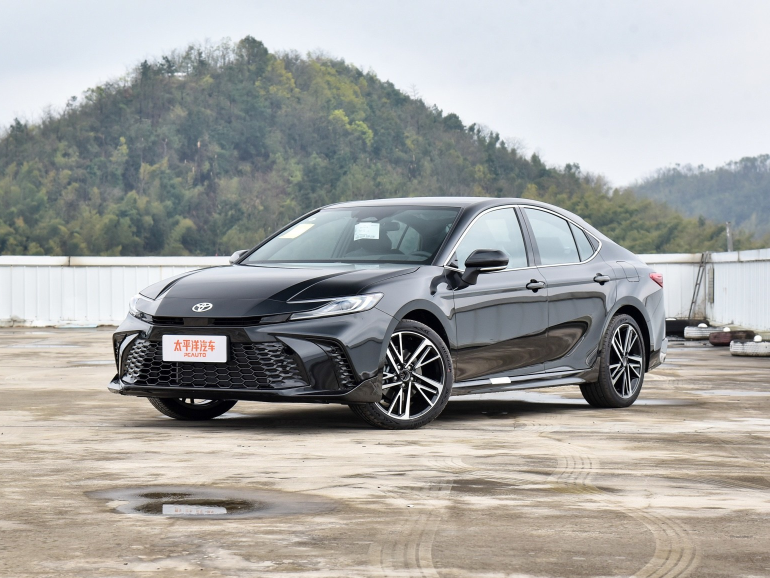
2025 Toyota Camry Test Drive: Quieter Cabin, More Enjoyable Driving!
JohnJun 20, 2025
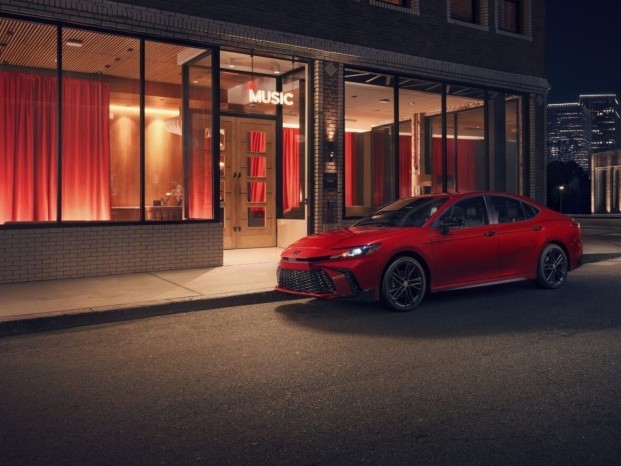
2026 Toyota Camry Introduces Nightshade Edition, Set to Launch in the U.S. This Fall
Kevin WongMay 6, 2025
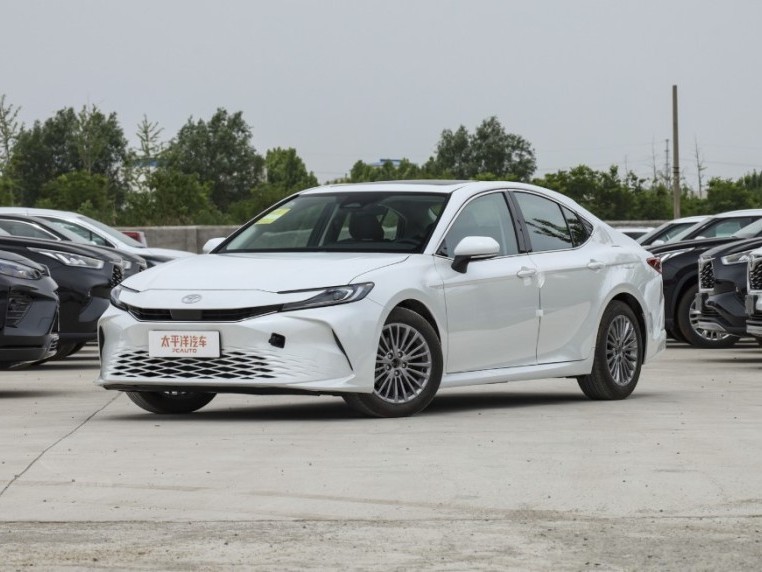
Toyota Camry XV80 Thailand Motor Expo 2024, 227PS, Fuel Consumption 5.1L/100KM
JohnDec 2, 2024
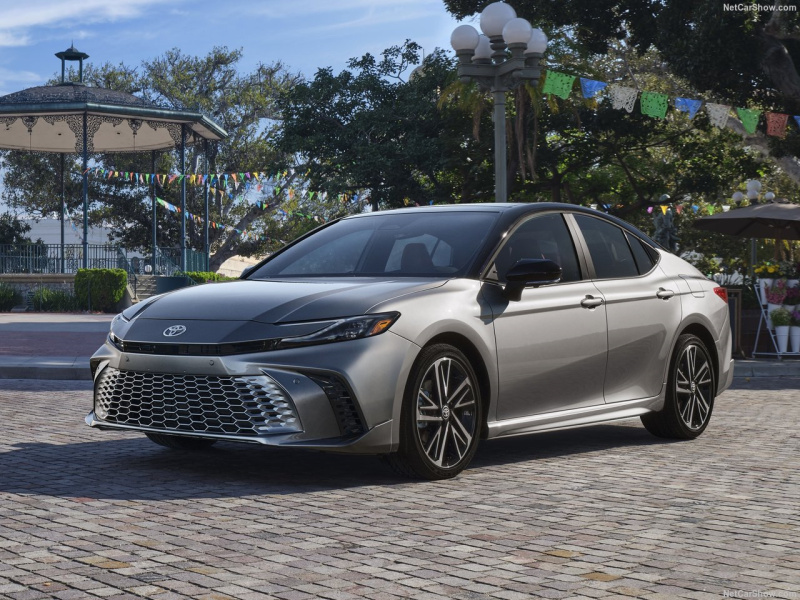
Why is Toyota Camry, with a cumulative sales volume of over 20 million vehicles, so popular among consumers worldwide?
MichaelOct 22, 2024
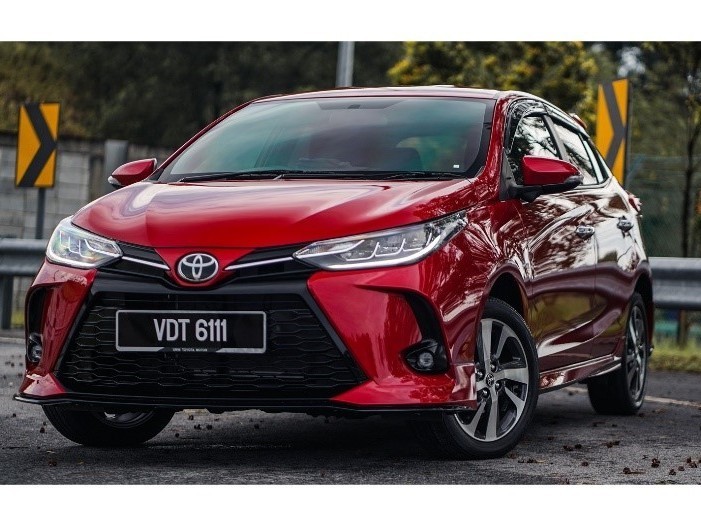
Spend the least money, buy the most suitable car: New car or used car, which one to choose?
RobertAug 28, 2024
View More












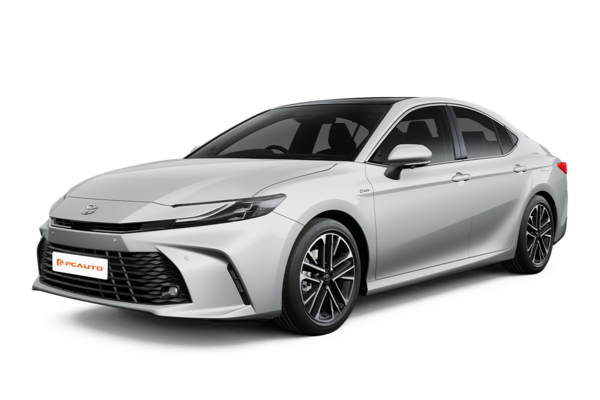





Pros
Cons